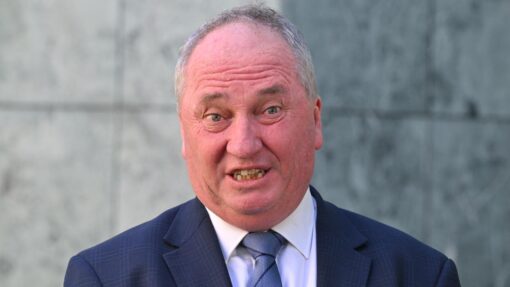Liberal debt to double, state companies face sell-off
Ethan James |

A state Liberal government will more than double debt while funding a new-build stadium and aim to rely on potential asset sales and a public service “efficiency unit” to find money.
Tasmania’s Treasurer Guy Barnett delivered the 2025/26 budget on Thursday, his first in the role for his party which has been in power for 11 years.
It forecasts net debt more than doubling from $5.3 billion in 2024/25 to $10.8 billion in 2028/29, at a steeper trajectory than predicted in last year’s budget.
Mr Barnett said the amount of debt was manageable and necessary so the state could invest in economy-boosting infrastructure and increase health and education funding.
The budget spells out more than $600 million of funding for a new waterfront stadium in Hobart, a condition of the Tasmania Devils entering the AFL in 2028.
The venue’s estimated cost recently blew out from $775 million to $945 million.
The budget doesn’t include $300 million in state government borrowings needed to make up a funding gap.
The state previously pledged $375 million towards the stadium, while the federal government is chipping in $240 million and the AFL $15 million.

The budget estimates a $1.01 billion deficit in 2025/26 will improve to a $236 million deficit in 2028/29.
Mr Barnett claimed his government was on a “sensible path” to deliver a surplus in 2029/30, one year beyond the financial modelling of the budget.
Labor opposition MP Josh Willie said it was the worst budget in the state’s history.
“When the Liberals came to office in 2014, Tasmania had $208 million in the bank,” he said.
“Now … Tasmania is staring down the barrel of almost $11 billion worth of net debt.”
The Liberals also face kickback from unions after revealing more details about potential state-owned business sales.

The sale of some businesses has been ruled out but about a dozen remain under assessment, including bus operator Metro Tasmania and power provider TasNetworks.
Funds from potential sales haven’t been modelled in the budget. Shedding of some of the businesses would have to be green lit by a parliament in which the Liberals have a minority.
Several independent MPs on the crossbench gave a scathing assessment of the budget, with one labelling it “alarming”.
Crown land could also be sold to help the state return to surplus and pay down debt, Mr Barnett said.
An efficiency and productivity unit, which has been likened to measures implemented by US President Donald Trump, will review government programs.
The unit will find savings of $150 million per year, while there is a freeze on hiring of non-essential public sector workers.
The government said it planned to cut 2500 public servant jobs by 2032/33.

Public sector wages, including superannuation, are the largest operating expenditure item for the government, making up 46 per cent of total operating expenditure in 2024/25.
Global credit ratings agency S&P said Tasmania’s AA+ position had shifted from stable to negative, citing weaker financial outcomes and a rising debt burden.
As a percentage of gross state product, Tasmania’s debt is the fifth worst of Australian states and territories.
TASMANIA’S BUDGET 2025/26:
* Deficit: $1.01 billion
* Revenue: $9.5 billion
* Expenditure: $10.5 billion
* Net debt: $7.4 billion
* GST revenue: $3.8 billion
* Unemployment: 3.8 per cent
* Five biggest spending areas: health (34 per cent), education (23), public order and safety (nine), general public services (eight) and social protection (seven)
AAP


